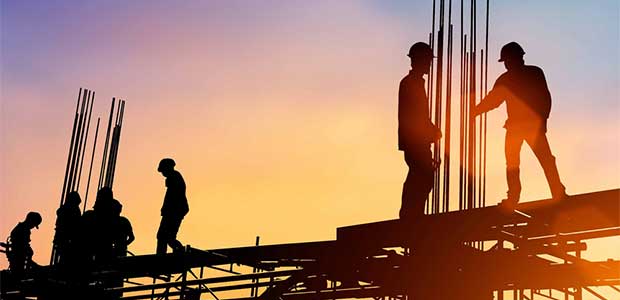
Rethinking the Construction Industry’s Suicide Prevention Model Will Save Lives Today
The construction industry has one of the highest suicide rates by population for males.
- By Michael Hudson
- Dec 12, 2022
Work-related stress is all around us and is especially exacerbated by life stressors in our post-pandemic world as inflation soars and terms like job burnout become more ubiquitous than ever, but in certain industries, it has a stronger presence. In particular, the construction industry has been overlooked, often resulting in tragedy.
Construction workers today are under increasing pressure and stress. The industry must undergo a complete mental health overhaul and process improvement that identifies and supports those struggling workers now to save lives. The Centers for Disease Control and Prevention found that men working in construction have one of the highest suicide rates by population: their rate of suicide is about four times higher than the general population and is the second-highest rate of all workplace industries at 45 per 100,000.
Mental health challenges are so pervasive among construction workers that OSHA has intervened to increase awareness of the immense suicide risk in the industry. OSHA also recently signed an alliance with the American Foundation for Suicide Prevention to promote workplace mental health and implement suicide prevention measures, such as providing healthcare professionals, businesses, trade organizations and others with resources and training to raise awareness of issues related to occupational deaths by suicide.
Despite these meaningful steps in the right direction, the suicide death toll in construction remains devastatingly high, and the industry is fraught with compounding pressures that adversely affect mental health. Long, hard hours and the daily risk of serious injury are embedded into the occupation and contribute to increased stress. In addition, construction workers face uncertain seasonal work and job travel that requires them to be away from their core support systems. The challenging nature of the industry contributes to anxiety, depression and, in some cases, substance abuse—factors that can lead to suicide and accidents if left unchecked.
Among male construction workers, 2.5 percent self-reported experiencing suicidal ideation and 30 percent cited regular psychological distress. Weak safety and inspection enforcement add physical risk to the workplace, and some construction workers struggle with substance abuse and are victims of the opioid epidemic. Together, these circumstances further exacerbate the construction industry’s mental health crisis.
Work-related injuries are a real risk, often as a result of distraction, overexertion and challenging environments. Compounding these job-site risks, construction workers may work through their injuries due to factors such as insufficient paid time off or fear of unaffordable health care costs. However, forgoing proper treatment increases the risk of suicidal ideation and the likelihood that workers turn to substance abuse such as alcohol or opioids to self-medicate. These effects are often seen in tandem: male workers with illicit opioid use were almost twice as likely to report suicidal ideation.
Currently, the burden lies on the individual already in distress to seek out solutions, such as enrolling in an assistance program or calling a suicide prevention hotline. Today, most company outreach efforts are limited to generalized awareness and are often centered around calendar-based campaigns. These outdated modes of support are a byproduct of the current sub-optimized model of care and are leaving workers isolated and companies out of step with their workforce.
We can’t put the burden in the hands of those who are already struggling. Simply offering access to generic, impersonal resources isn’t enough. To save lives, we must take a more proactive approach to suicide prevention and mental health intervention, and ensure we are offering focused help at the individual level to the workers who need it most today.
Management can take mental health measures into their own hands by implementing software that picks up on real-time, evidence-based indicators that are a precursor to suicide risk. According to the National Alliance on Mental Illness, increased alcohol and drug use, aggressive and/or reckless behavior, dramatic mood swings and social withdrawal are among the warning signs of suicide. Employers and employees should learn to recognize patterns of compounding pressure such as relationship issues, financial pressure, alcohol and drug, including prescription, abuse and troubling social media activity in the public domain, and be empowered with ways to safely and constructively intervene when necessary. Simple measures such as creating a private and secure way for concerned colleagues to anonymously report if they see warning signs can be the difference between life and death.
Software that can securely and anonymously track these determinants allows management to uncover signs of struggle before it’s too late. However, it is important to bear in mind that safeguarding privacy and data security is of the utmost importance, especially when it comes to these highly sensitive topics. Privacy and compliance are the keys to unlocking the anonymous social determinants that are valuable in identifying a struggling employee.
As machine learning and artificial intelligence technology continue to evolve, we should apply these cutting-edge technologies in the workplace to combat construction worker suicide. For instance, secure machine learning and artificial intelligence can be used to create a composite risk score that surfaces unusually high levels of suicide risk by aggregating social determinants. This possibility offers an effective technological solution that balances privacy with prevention and allows for timely intervention.
We must flip the current static model of suicide prevention from reactive to proactive. By leveraging real-time, secure technology to pinpoint the warning signs of decreased individual resilience, wavering mental health and behaviors and actions, often away from the job site, construction industry leaders can begin to cultivate a work environment that encourages reaching out to struggling employees in their time of need. No matter the industry, managers should be there for their workforce to provide support and take the burden of having to ask for help off their employees’ shoulders.